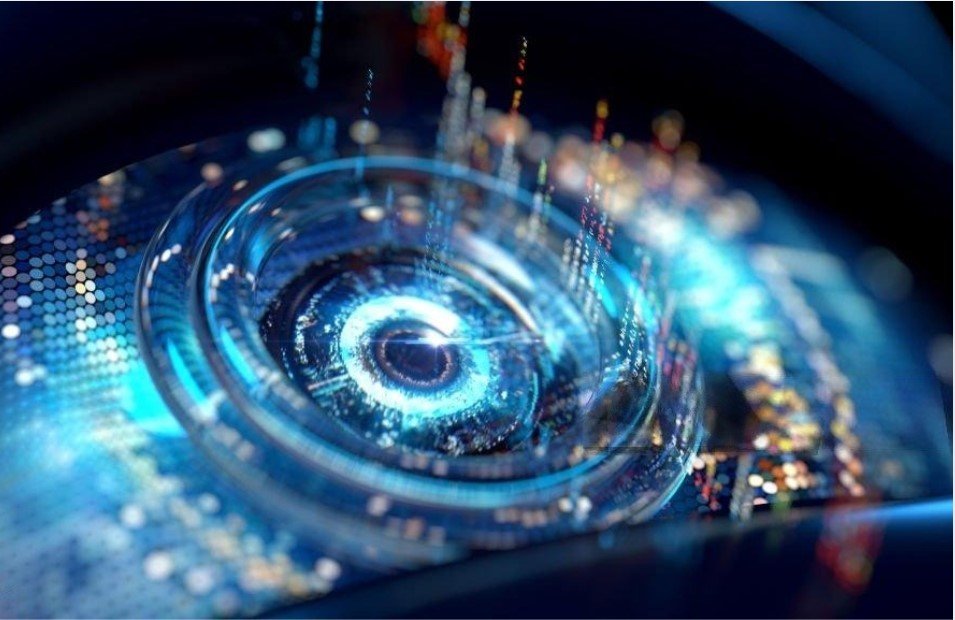Tech
Gravityinternetnet: The Next Evolution of Internet Connectivity
Published
2 weeks agoon
By
Bella P
The digital age continues to transform rapidly, bringing with it innovations that were once the realm of science fiction. Among these emerging terms is gravityinternetnet, a concept that has begun to attract attention in tech communities, AI circles, and futurist discussions alike. But what exactly is gravityinternetnet, and why is it being touted as the next leap in online connectivity?
In this in-depth article, we explore the meaning, framework, and potential impact of gravityinternetnet—from its theoretical underpinnings to its technological implications and practical benefits. Whether you’re a tech enthusiast, digital strategist, or simply curious about what lies ahead for the internet, this is your comprehensive guide to the concept of gravityinternetnet.
Understanding Gravityinternetnet
At its core, gravityinternetnet is a futuristic idea that reimagines how the internet could work—combining principles of data gravity, artificial intelligence (AI), blockchain, and next-gen networking protocols. Much like the gravitational force that pulls physical objects toward each other, gravityinternetnet aims to create a digital environment where data, users, platforms, and devices are intuitively and seamlessly drawn together.
While the term itself remains speculative—more of a visionary concept than a currently active technology—it offers a fascinating glimpse into what the internet of tomorrow might look like.
How Gravityinternetnet Works
If we extrapolate from current technological trends, gravityinternetnet could work as a synergistic network model—merging advanced AI algorithms, decentralized data layers, and real-time infrastructure optimization.
Here’s a high-level breakdown of how a gravityinternetnet system could function:
- Data flows are dynamically attracted to user needs, behaviors, and preferences.
- AI algorithms predict what users need and reconfigure content delivery systems accordingly.
- Blockchain secures transactions and data access, removing centralized vulnerabilities.
- Real-time feedback loops optimize latency, load, and delivery speeds across networks.
The result? An internet that feels smart, personalized, adaptive, and secure—a far cry from the one-size-fits-all model of today.
Key Features of Gravityinternetnet
Let’s explore the defining characteristics that distinguish gravityinternetnet from traditional internet systems.
1. Data Gravity and Digital Attraction
Inspired by the concept of data gravity, gravityinternetnet emphasizes how information and digital services can be attracted toward users and systems that request them most often.
- Faster access to frequently used services
- Content localization based on behavior, not just geography
- Smarter caching and mirroring strategies
This principle could reduce latency and deliver highly relevant results before users even finish typing a query.
2. Enhanced AI-Powered Connectivity
AI is the engine of personalization and automation in gravityinternetnet. The system could learn from:
- User behavior
- Device interactions
- Temporal patterns (time of day, usage cycles)
- Network conditions
By analyzing this data in real-time, AI could:
- Serve tailored search results
- Optimize video streaming quality
- Predict content demand spikes
- Reallocate network resources dynamically
3. Decentralized and Secure Internet Infrastructure
Security and privacy are core concerns in the digital age. Gravityinternetnet would address these via:
- Blockchain-based encryption
- Decentralized identifiers (DIDs)
- Zero-trust architecture
This reduces reliance on central servers or gatekeepers, which are often targets for cyberattacks or data exploitation.
4. Adaptive, Ultra-Fast Networking
Speed and scalability are non-negotiable in any future internet model. Gravityinternetnet would likely integrate:
- 5G/6G connectivity
- Edge computing and distributed cloud infrastructure
- Low-latency routing protocols
This would create a self-optimizing internet fabric that adjusts its behavior in real-time to meet current conditions.
5. Seamless Interconnection of Smart Devices
With IoT devices expected to exceed 30 billion by 2030 (source: Statista), gravityinternetnet must provide a frictionless environment for them to interact.
- Smart homes
- Wearables
- Autonomous vehicles
- Smart cities
A gravityinternetnet ecosystem could enable these devices to share data instantly and securely, optimizing everything from home energy use to traffic management.
Potential Benefits of Gravityinternetnet
If realized, the gravityinternetnet model could unlock a host of advantages.
1. Higher Efficiency and Speed
- Reduced lag through localized, intelligent data routing
- Instant data availability from AI prediction and edge caching
- Fewer hops between source and destination
This would benefit high-bandwidth tasks like cloud gaming, VR conferencing, and financial trading.
2. Improved User Experience
- Personalized recommendations in real time
- Predictive interfaces that adapt before input
- Adaptive UI/UX based on device, context, and preferences
Think of an internet that understands you—just like a personal assistant.
3. Increased Global Accessibility
By decentralizing infrastructure and integrating with satellite internet systems (e.g., Starlink), gravityinternetnet could bring high-speed connectivity to underserved regions.
- Remote education
- Telemedicine in rural areas
- Cross-border collaboration
This could be a major step toward closing the digital divide.
4. Enhanced Digital Security
With built-in blockchain and decentralized identifiers, users could enjoy:
- Complete control over data
- Tamper-proof records of activity
- Reduced dependence on third-party verification
Combined with AI-based anomaly detection, this could make hacking and surveillance significantly harder.
Challenges and Concerns
While the gravityinternetnet vision is promising, implementing it is not without obstacles.
1. Infrastructure Overhaul
- Existing systems (ISPs, DNS servers, routers) aren’t designed for such intelligent, decentralized functionality.
- Significant investment would be needed from telecom companies, governments, and tech giants.
2. Privacy vs. AI Analysis
- AI requires data to learn and improve, but that data may include personal information.
- Regulatory frameworks (GDPR, CCPA) must evolve to balance innovation with privacy.
3. Global Coordination
To be effective, gravityinternetnet must be interoperable across borders. That requires:
- Global standardization
- Multilateral agreements
- Shared open-source protocols
Political, economic, and cultural differences could slow down adoption.
The Future of Gravityinternetnet
Is gravityinternetnet a marketing buzzword, or a glimpse into the future? Realistically, it’s both. While the term is still conceptual, the building blocks already exist:
- AI for personalization
- Blockchain for decentralization
- Edge computing for latency reduction
- 5G and beyond for bandwidth and speed
In the next 5–10 years, these technologies could converge into a system resembling what gravityinternetnet envisions.
Major players like Google, Meta, Amazon Web Services, and decentralized Web3 projects are already experimenting with similar ideas under different names.
Conclusion
Gravityinternetnet represents a compelling vision of where internet connectivity could go—faster, smarter, more secure, and more human-centric. While it’s not a fully developed technology today, the foundational elements are already in motion across AI, blockchain, edge networking, and decentralized architectures.
As we move deeper into the age of hyper-connectivity, concepts like gravityinternetnet help frame the conversation about what kind of digital future we want to build.
Whether it becomes the dominant paradigm or remains a speculative framework, gravityinternetnet encourages us to rethink our assumptions about how data, people, and devices should interact in the digital world.
FAQs
What is gravityinternetnet?
Gravityinternetnet is a conceptual framework for a future internet that is AI-powered, decentralized, adaptive, and designed to deliver seamless, secure, and personalized digital experiences.
Is gravityinternetnet a real technology?
Not yet. While the term is theoretical, many of its components—like data gravity, blockchain, edge computing, and AI—are actively being developed.
How does gravityinternetnet differ from today’s internet?
Today’s internet relies heavily on centralized servers and manual interaction. Gravityinternetnet proposes a self-optimizing, predictive, and decentralized model of connectivity.
Could gravityinternetnet replace the current internet?
In time, it could evolve into an alternative or next-generation layer that overlays or transforms current infrastructure—but widespread adoption would take years and require global cooperation.
For More Updates And Stories Visit To: Dooper Magazine

Who Is Michael O. Johnson? (All About Business Executive & Former Herbalife Chairperson

BlueFlame PublishingNet: Igniting the Future of Modern Publishing

Previpagos3g: The Future of Digital Insurance Payments

Who Is Lucas Chevalier? All About the French Soccer Goalkeeper

Who Is Gary Rhodes? All About the British Restaurateur and Celebrity Chef

World-Renowned American Scientist Harold E. Varmus Life And Career

Who Is Vesna Dragojević? All About Oliver Dragojević’s Wife

SparkPressFusion com: The Future of Smart Content Publishing

Who Is Dougie Vipond? All About the Scottish Broadcaster and Drummer

The Journey of Galton Blackiston Inside a British Chef’s Culinary World

Who Is John Pankow? All About the American Actor

Michael Atherton as Broadcaster A Voice Beyond Cricket

Who Is Mark Bowe? All About the TV Personality

Who Is Brooks Darnell? All About the Talented Actor

Who Is Cade Foehner? All About Cade Foehner Singer & His Journey

Who Is Jennifer English? All About the British Actress

Philippe Bianchi Insights into Jules Bianchi’s Father

Serialpressit com Review: Is It Legit, Safe, or a Scam? Complete 2025 Guide

Cevurı: The Future of Simplified Digital Transformation

Who Is Dan Jeannotte? All About the Talented Canadian Actor

Who Is Michael O. Johnson? (All About Business Executive & Former Herbalife Chairperson

BlueFlame PublishingNet: Igniting the Future of Modern Publishing

Previpagos3g: The Future of Digital Insurance Payments

Who Is Lucas Chevalier? All About the French Soccer Goalkeeper

Who Is Gary Rhodes? All About the British Restaurateur and Celebrity Chef

World-Renowned American Scientist Harold E. Varmus Life And Career

Who Is Vesna Dragojević? All About Oliver Dragojević’s Wife

SparkPressFusion com: The Future of Smart Content Publishing

Who Is Dougie Vipond? All About the Scottish Broadcaster and Drummer

The Journey of Galton Blackiston Inside a British Chef’s Culinary World
Trending
-

 Celebrity8 months ago
Celebrity8 months agoWho Is Mindy Jennings? Inside the Life of Ken Jennings’ Wife
-

 Celebrity7 months ago
Celebrity7 months agoWho Is Angela Simmons? All About Her Business, Fame, and Personal Life
-

 Celebrity7 months ago
Celebrity7 months agoWho Is Dexter Keaton? Everything About Diane Keaton’s Daughter
-

 Celebrity7 months ago
Celebrity7 months agoWho Is Mikayla Demaiter? From Ice Hockey to Modeling Success
